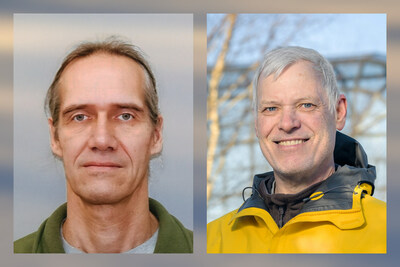
Hokkaido University researchers and colleagues show that stratospheric aerosol injection has the potential to reduce ice sheet loss due to climate change.
SAPPORO, Japan, Jan. 30, 2024 /PRNewswire/ -- One of the many effects of global warming is sea-level rise due to the melting and retreat of the Earth's ice sheets and glaciers as well as other sources. As the sea level rises, large areas of densely populated coastal land could ultimately become uninhabitable without extensive coastal modification. In order to stave off this possibility, carbon emissions need to reach net negative, a state that is hard to achieve under current circumstances.

There are many proposals to drastically mitigate the effects of climate change, and the most expansive of these involve interventions that will alter aspects of the entire globe-the geoengineering techniques. While they have some promise, we do not understand enough about natural cycles to fully assess how beneficial such interventions will be.
An international team of researchers led by Professor John C. Moore, at the University of Lapland, Rovaniemi, Finland, and Professor Ralf Greve, at the Institute of Low Temperature Sciences, Hokkaido University, has used simulations to examine the potential effects of a geoengineering technique called stratospheric aerosol injection on ice sheet melting. Their findings were published in the Journal of Geophysical Research: Earth Surface.
"Stratospheric aerosol injection, or SAI, would artificially introduce aerosols into the stratosphere by aircraft or high-altitude balloons to create a cooling effect via global dimming and increased albedo-the degree to which Earth reflects sunlight," Moore explains.
Moore, Greve and colleagues used the SICOPOLIS model to simulate the changes in the Greenland Ice Sheet for the period 1990-2090 under three different scenarios: RCP8.5 (worst-case scenario, unabated warming); RCP4.5 (intermediate scenario, possibly achievable under current conditions); and GeoMIP G4 (RCP4.5 plus the injection of 5 million metric tons of sulfur dioxide per year into the stratosphere during 2020-2070).
The simulations showed that SAI of sulfur dioxide would have a clear protective effect on the Greenland Ice Sheet. Under RCP8.5, there would be ice loss equivalent to approximately 90 mm sea-level rise; under RCP4.5, ice loss would be approximately 60.6 mm sea-level rise; but under GeoMIP G4, ice loss would be limited to approximately just 37.6 mm sea-level rise. When these scenarios were tested with a different model, Elmer/Ice, the results were similar. The margins of the ice sheet would benefit the most under GeoMIP G4.
"While this study shows that SAI could contribute to the protection of the Greenland Ice Sheet, and hence, potentially, all other ice cover on Earth, geoengineering is a highly contentious topic," Greve concludes. "The biggest issue is that it addresses only the symptoms of global warming, not the root causes-and may even delay the changes required to address the causes. Furthermore, due to the immense complexity of the natural systems on Earth, it is impossible to predict exactly what positive and negative outcomes could result."
Contacts:
Professor Ralf Greve
Institute of Low Temperature Science
Hokkaido University
Tel: +81-11-706-6891
Email: greve[at]lowtem.hokudai.ac.jp
Sohail Keegan Pinto (International Public Relations Specialist)
Public Relations & Communications Division
Office of Public Relations and Social Collaboration
Hokkaido University
Tel: +81-11-706-2186
Email: en-press[at]general.hokudai.ac.jp
Paper:
John C. Moore, Ralf Greve et al. Reduced Ice Loss From Greenland Under Stratospheric Aerosol Injection. Journal of Geophysical Research: Earth Surface. November 27, 2023.
DOI: 10.1029/2023JF007112
Funding:
This study was supported by the National Key Research and Development Program of China (2021YFB3900105); State Key Laboratory of Earth Surface Processes and Resource Ecology (2022-ZD-05); Finnish Academy COLD consortium (322430, 322978); Japan Society for the Promotion of Science (JSPS) KAKENHI (JP16H02224, JP17H06104); Arctic Challenge for Sustainability projects (ArCS, ArCS II) of the The Ministry of Education, Culture, Sports, Science and Technology of Japan (MEXT; JPMXD1300000000, JPMXD1420318865); and a Hokkaido University Foreign Visiting Professorship at the Institute of Low Temperature Science.
Press release on Hokkaido University website:
https://www.global.hokudai.ac.jp/blog/geoengineering-may-slow-greenland-ice-sheet-loss/
Photo - https://mma.prnewswire.com/media/2329927/Hokkaido_University_1.jpg
![]() View original content:https://www.prnewswire.co.uk/news-releases/geoengineering-may-slow-greenland-ice-sheet-loss-302048004.html
View original content:https://www.prnewswire.co.uk/news-releases/geoengineering-may-slow-greenland-ice-sheet-loss-302048004.html

